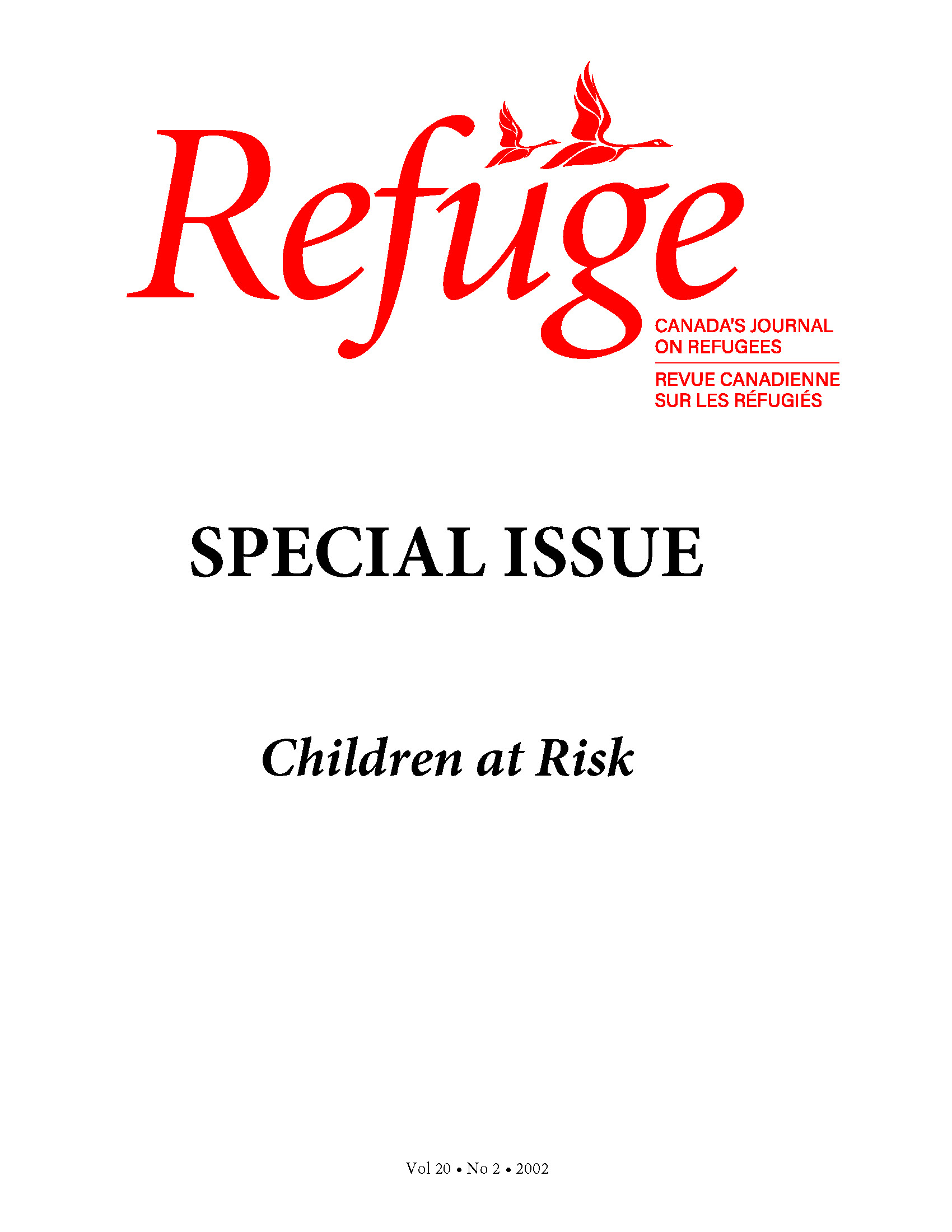The Rights of Internally Displaced Children: Selected Field Practices from UNICEF’s Experience
DOI:
https://doi.org/10.25071/1920-7336.21252Keywords:
UNICEF, forced migration, internally displaced persons, children, human rights, field practicesAbstract
Displacement is a critical humanitarian issue—forty million people are displaced as a result of conflict and other humanitarian crises. Approximately half of the world’s displaced persons are children. Children in flight are at greater risk of malnutrition and disease, physical danger, and psychological trauma. Many do not survive. When they do, their ability to lead normal lives is greatly impaired—many have no access to education and health care. This paper examines selected examples from UNICEF’s work in the field with internally displaced persons. UNICEF’s work with internally displaced children and families focuses on four areas: (1) advocacy, (2) assessment, (3) care, and (4) protection. Conclusions and recommendations are presented drawing from the field practices.Metrics
Downloads
Published
How to Cite
Issue
Section
License
Copyright (c) 2002 Subajini Mahalingam, Geeta Narayan, Esther van der Velde

This work is licensed under a Creative Commons Attribution-NonCommercial 4.0 International License.
Refuge authors retain the copyright over their work, and license it to the general public under the Creative Commons Attribution-Non Commercial License International (CC BY-NC 4.0). This license allows for non-commercial use, reproduction and adaption of the material in any medium or format, with proper attribution. For general information on Creative Commons licences, visit the Creative Commons site. For the CC BY-NC 4.0 license, review the human readable summary.







